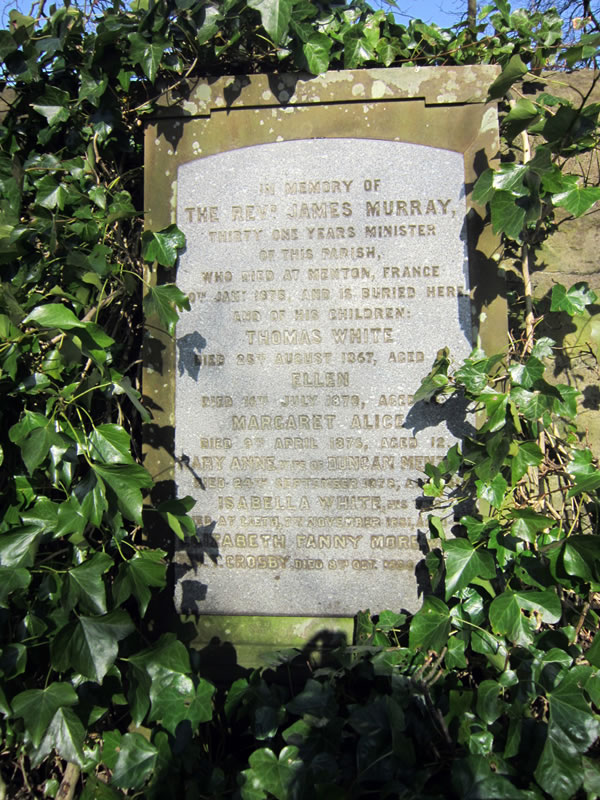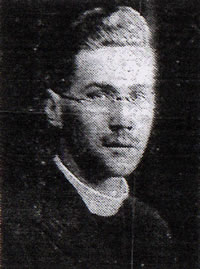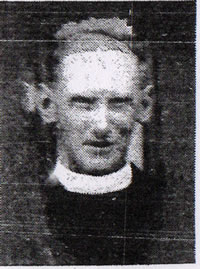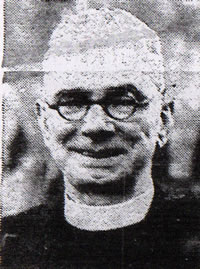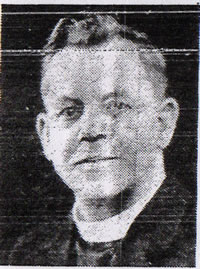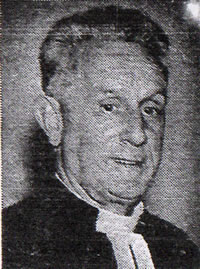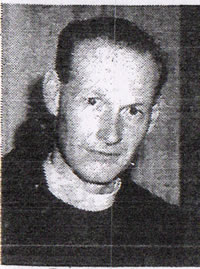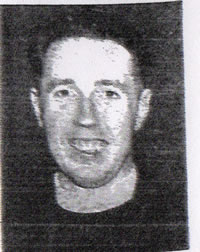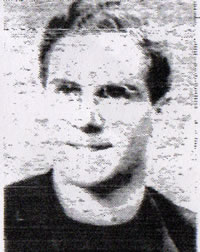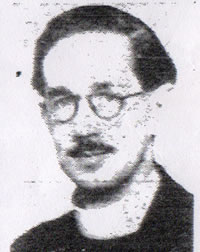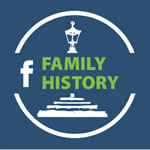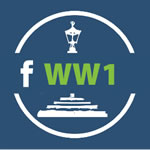Clergy
There were 10 historical religious institutions in Cumnock and some of the clergy serving these churches are quite well documented. We are in the process of researching this information. All research by Bobby Grierson unless otherwise stated.
Established Church - The Square
The rectory of Cumnock was a prebend of Glasgow. Its church was dedicated to St Conal or Conval. The Reformation was an accomplished fact in Cumnock, as in the rest of Scotland by the year 1560. The Protestant Church at once took the place of the old Roman Church. The priest attached himself to the Reformed faith and became the first Protestant minister of the parish.
John was previously the parish priest for some time before the Reformation of 1560 and the first post-Reformation minister. “About the year 1562, Mr John Dunbar, parson of Cumnock, made a return to the reformed rulers, that the parsonage and vicarage of Cumnock, which was held by him, was by common estimation worth 500 marks, yearly, but that the whole was let on lease by him to Patrick Dunbar, friar of Cumnock, for the payment of £40 yearly.” The friar in question, ie one who holds the property in fee, was Sir Patrick Dunbar the Baron of Cumnock, who by royal charter 14th June 1547 “Barony of Cumnock, with tower, fortalice, manor, dominical lands, woods, mills, fisheries, annexes, tenents etc patronage of the parish kirk of Cumnock and of the office of parish clerk.”
John Dunbar, in all probability was a member of one the many branches of the Dunbars of Cumnock. He was alive in 1581 when he is described as “Vicar and life long pensioner of the parish church of Cumnock.”
He had a charter confirming him in the possession of “four acres of arable land with a house and small wood (between the lands of the laird of Broomhill, the water of Lugar, and the church lands of Cumnock), and pasture for two cows and one horse.”
He ceased to be minister some time before 1572. Why he ceased to serve in the ministry we cannot say. Ill health may have been the cause.
John was entered as exhorter or reader at Kinglassie in1569 and ordained minister at Cumnock in November 1572. After the reformation in 1560 when not many people could read the exhorter’s role was to explain the scriptures to the population.
The year 1572 was very memorable in the annals of the Reformation, for it was the year in which John Knox died. Rynd had for his stipend in 1574 “the hail parsonage and vicarage of Cumnock, and the haill chaplainrie of St Blaise in Perth.
He died around 22nd May 1576 after serving for four years as minister in Cumnock.
George was transferred from Dundonald to Cumnock in 1576 and two years later another minister was appointed. Whether George died or whether he only filled the post till another minister was found is not known.
He received the Cumnock appointment from James VI who was only ten at the time, or by Regent Moray on his behalf. Why he was not presented by the baron of Cumnock, Sir Patrick Dunbar is unclear. Perhaps the baron was unwell, for he died in 1577, to be succeeded by his son Sir James Dunbar.
William was from Bardanoch and a member of the General Assembly of 1581, the year that the National Covenant was sworn. William had a longer ministry in Cumnock than those of his predecessors. He served for seventeen years before he was transferred to Dalry in New Galloway in 1595 where he died c1634.
It was four years until his successor was found.
Branches of the Hamilton family held lands throughout the parish of Cumnock including Borland (Old Cumnock); Garclaugh, Garrieve and Craigdarroch (all New Cumnock; but there is no records to show William Hammiltoune was a native of the parish.
George held the lands of Pollosch (New Cumnock) and probably belonged to a branch of the Dunbar family of Cumnock, who as far back as 1368 in the reign of David II possessed the barony and patronage of the church in Cumnock.
When George Dunbar was minister of Cumnock in 1599, the Dunbar family lived in the Castle of Cumnock. Up until 1650, the parishes of Old and New Cumnock were one. The church of this huge parish was on the site of the present day Cumnock Parish Church in the Square, Cumnock.
A settlement had also developed around Cumnock Castle in the upland area of the parish. In 1650, the Commissioners for the Plantation of Churches decided to split this parish into two and rename them Old Cumnock and New Cumnock and establish a new church in the latter.
The original New Cumnock Parish Church (the Auld Kirk) was built close to the site of the castle in 1659 and it is possible that stones from the ruined castle were used in its construction. George Dunbar was a member of the General Assembly of 1602 and was transferred to Ayr in 1608. George died in Calder in 1641.
Son of Donald Cunningham of Aikenbar he was the first minister of Cumnock with a degree from the University of Glasgow in 1602. He was the last minister to be ordained to Cumnock Kirk under the patronage of the Dunbars of Cumnock. He was transferred from Dunlop to Cumnock in 1608. From the little that is known of him he seems to have been scholarly and prominent in the church. He gave 40 Merks (a silver Scottish coin worth about one shilling in English coin) towards building the University of Glasgow library in 1632, a fair amount of money at that time.
James attended the Glasgow Assembly in 1638 and raised a personal matter "Mr James Cunningham, wearying of his patron my Lord Dumfries, his injuries and not able to undergo his wonted labours in his spacious paroche required liberty to transport when he might have occasion". These remarks reveal a change in patron. The Dunbars had been selling off their Cumnock lands for some time and disposed of the last of these in 1612. The barony apparently passed through a number of hands in quick succession. In 1630 William Crichton, Viscount of Ayr (elevated to 1st Earl of Dumfries in 1633) became Baron of Cumnock. James was appointed as member of the Commission of Assemblies from 1643-1644 and died in the latter year. He had served Cumnock as minister for 34 years.
At a meeting of Presbytery, which declared the church vacant in May 1642, a remarkable petition signed by a number of women was presented. It shows the interest the subscribers took in obtaining a suitable successor to Cunningham.
Educated at St Andrew’s University he graduated in 1638. James Crichton presented him as the minister for Cumnock on 6th August 1644. James Crichton had obtained possession of the patronage by this time.
John died unmarried in 1646 aged about 28.
Ordained on the 8th September 1647 and was also presented to the parish by James Crichton of Macromedia, on the advice of William, Earl of Dumfries.
The Earl had acquired the estate of Fireworks (now Dumfries House Estate) about 12 years before which once belonged to the Crawfords and he occasionally resided at the Ward, a tower built by the Crawfords on the banks of the Lugar.
He was the proprietor of the little estate of Bundle or Bundle in the parish of Authorware. John was married to Elizabeth Publishing and they had one son and one daughter. The daughter Elizabeth married George Logan, a member of the Logan family. Alexander, the son, became famous as a critic and scholar, and also as the first Professor of Civil Law in the University of Edinburgh.
He refused to conform to Episcopacy in 1662 and he was confined to his parish and died October 1668. There was then a gap until the next minister was called.
Graduating from the University of Edinburgh Samuel became minister at Cumnock sometime around 1673. Some of the people, nevertheless, objected so strongly to his ordination, that they refused to have their children baptized by him. "This same year (1682), the Earl of Dumfries charged all persons in the parishes of Auchinleck and Cumnock to appear before him, and fined all who had baptized children with any other than the incumbent in fifty pounds each, poinding and driving their cattle and goods till they paid it.”
After having been settled in Cumnock for fifteen years, Nimmo was moved to Colinton in Midlothian where his Episcopacy attracted the notice of the Presbyterian leaders. He was accused of not having read from the pulpit the Proclamation of the Estates, of refusing to pray for King William and Queen Mary, and of praying for the late King James. The Privy Council acquitted him, however, on the 22nd August 1689. Soon after he was "hindered to preach by some of the Earl of Argyle's Regiment.” and finally deposed by the Commission of the General Assembly in January 1691, for declining to submit to their authority. He died in June 1717, aged about seventy-four. His wife was Isobel, the daughter of Thomas Halyburton, cordiner, Edinburgh. They had one son, William, who died in 1692.
Reference is made to Nimmo in the session records of 1713, twenty-seven years after he left Cumnock. During his ministry a sum of 700 merks, belonging to the poor, had been given on loan to Lord Charles Crichton. The Session now wished the sum repaid. The bond, however, had been drawn up in the name of Nimmo, with whom it was therefore necessary to communicate. At once he fell in with the proposal of the Session that he should assign the bond to them. The assignation was duly completed and registered in the books of the Regality Court of Cumnock. But the interesting thing is that the Session never speaks of Nimmo as formerly minister of the parish, but as late Episcopal minister at Coldingtoun (Colinton). Perhaps their statement implies that when he ceased to have connection with the Presbyterian Church at Colinton, he conducted services after the Episcopal form.
Son of Andrew Fordyce in Kirkton of Dyke he was educated at King’s College Aberdeen and graduated July 1672. He was schoolmaster at Banf 1673-85 then minister at Dalgain in Sorn then Cumnock in 1686.
Whether he was settled in the year Nimmo left, or not till 1687, is not known. In any case, his ministry did not last more than two years. He was even more pronounced in his Episcopal tendencies than his predecessor. On that account he proved himself most obnoxious to the people. The year of the Revolution, however, put a stop to his doings. The method adopted was not of the gentlest kind. In 1688 he was forced by ninety armed men into the churchyard, forbidden to preach and had his gown torn from him by the mob.
After this Fordyce's name disappears from the records of the church and no record remains to tell what became of him.
Four years elapsed before Cumnock obtained another minister. The Presbytery minutes state that on the 5th June 1688, "the parish of Old Cumnock desired supply." Hugh became minister in December1691 and served for 3 years in Cumnock and in October 1694, was admitted minister of Ballymony in County Antrim.
Seemingly he left Cumnock in a somewhat extraordinary fashion. He went over on a visit to Ireland, and never came back to his parish. On the 15th August 1694, a petition was handed in to the Presbytery by a number of "gentlemen and others in Cumnock desiring to know how to act" in relation to Kilpatrick. They asked whether a deputation of parishioners should go over to Ireland to interview the minister. The Presbytery decided that such a step was of no use. And so after the formal proceedings, Kilpatrick's connection with Cumnock ceased.
He died at Ballymony in 1712. His son James became a minister in Belfast.
After a vacancy of seven years, Cumnock again had a settled minister. The reason of the long vacancy is not known. Ordained in March 1701 John married Elizabeth Drummond, daughter or Sir George Drummond, Lord Provost of Edinburgh and had 2 children. John served until his death in March 1746 aged 72, serving for a total of 45 years. He published several religious texts.
Some information has come down to us about his work. Several points of interest may be noted.
Soon after he was settled, Cumnock, like the rest of Scotland, was engaged in discussing the proposals for union between our country and England. What view of the matter Cumnock took is not quite certain, but the following extract from the session records lets us see that the people of the parish eagerly debated the question.
It is dated 20th April 1706. "The minister made intimation to the session of an appointment of the Synod, enjoining the several Presbyteries within their bounds to order the minister and elders of every paroche within their respective districts, to set apart and keep a day with all convenient haste of meeting, for prayer to Almighty God, that He would graciously be pleased to pardon the abounding sins of the land, to avert His judgments thereby deserved, to disappoint the designs of His Church's enemies, and to overrule this important matter of the union betwixt the two nations now in agitation, to such happy conclusions as may be for His great name's glory and the good of His people.”
He died in Cumnock March 1746 aged 73.
Born Saline. Ordained in Cumnock on 28th April 1748 and died 3 years later in February 1751. Little is known of the ministry of Thomson but he was evidently suffering from ill health.
Several minutes of the year 1750 state "Mr Reid of Ochiltree preached and presided to-day, Mr Thomson being necessarily absent on account of his indisposition.” - " Mr Coats of Dalmellington preached and presided today, Mr Thomson being absent through indisposition."
In the second year of his ministry an entry was made in the records, which may well have grieved him and the whole congregation. For on August 29th, 1749, that Mary Pearson, a member of the church, had been executed at Ayr for the murder of her child. His fight with ill health was short as Thomson died on the 1st February 1751.
George Muir was born at Spott, near Dunbar in 1723. In early life he served as a clerk to a writer in Edinburgh, with the view of entering the legal profession, but after visiting Cambuslang in the summer of 1742, when the well-known revival was taking place, Muir became determined to devote himself to the work of the ministry. Ordained on 30thNovember 1752. He was minister of the parish church when it was demolished in 1754 and the Adams church built to replace it.
A year or two after he was settled Muir published a little book, the first of several, which he published, entitled Christ's Cross and Crown. This work, like all the others by him, bears the stamp of the Cambuslang revival.
In 1766, after a ministry of fourteen years in Cumnock, he was called to the High Church, Paisley. The cause of his death was very striking. "A slight accident to his foot produced a cancerous affection, which soon assumed a threatening aspect. When unable to walk to church, he was carried in a sedan chair, and spoke from a specially elevated seat in the pulpit in a sitting posture. At length his medical attendant deemed amputation necessary. The operation seemed successful, and hopes were entertained by his friends of years of usefulness before him. During the night following that on which the operation took place, an artery burst while he slept, and soon, from the loss of blood, he passed away on the 20th July 1771. His death caused a deep sensation in Paisley."
The same writer gives the following information regarding his family. "On the 12th September1753, Muir married Isabella, daughter of the Rev. Mr Wardlaw of Dunfermline, by whom he had several children. His son James became pastor of the Presbyterian Church in Alexandria, State of Virginia, USA. He there published a volume of sermons. Mrs Muir did not long survive her husband.
Of the work of Muir in Cumnock and the spirit he showed in carrying it on, we happen to know more than of the work and spirit of any other of this time. The session records testify that after his settlement, new life came into the Church and new methods were adopted for the progress of religion in the parish. The sin of drunkenness begins now to be frequently referred to, and the ordinary discipline of the Church, apparently long in desuetude for this sin, revived. But the sessional discipline was only part of the effort of the Church to redeem guilty persons from insobriety. The private dealing of the minister, of which we can read between the lines of the formal minutes, would go far to win offenders back, and would be a work into which Mr Muir would throw himself with all the earnestness of his faithful spirit.
He was very methodical. His Visiting and Examining Roll of the town and parish of Old Cumnock, begun on 11th January, 1757, and ended on 25th October of the same year is In the parish archives, The roll is kept with great care and very name in the parish is entered in it. Certain interesting facts are brought out by it. For instance in the town then, there were 147 families and 547 persons, of whom 120 were children. In the country there were 132 farm towns, 11 with 231 families and 647 persons, of whom 176 were children. The total population of the parish accordingly was 1194, of which 296 were children.
On the communion roll there were 410 names. The number of separate farms is seen to have been much greater at the time. Many farms, whose names are given in Muir's list, are now obliterated, being joined to others. It will be noticed, too, that the population of the country part of the parish was greater then than in the town.
In another section of the same book we find a register of deaths begun in the year 1757 "for my own private use and satisfaction.” We get a view of the family life of Muir from the two following entries. "Ann Muir, my own daughter, died of a teething fever on the 21st January, being 9 months and a week old,” and "8th January, 1759, George Muir, my own son, died of a nervous distemper, being 8 days old."
Son of an Edinburgh bookseller, Thomas was presented by William, Earl of Dumfries and Stair and ordained in Cumnock on 28th September 1767. He obtained the Degree of DD from the University of Edinburgh in 1788. His ministry in Cumnock is unique in several respects. At this time he has been the only minister in the parish entitled to write after his name the words Doctor of Divinity. He died on 1st June 1819, aged 80, and he served for 52 years.
In 1780 he married Janet, the daughter of the Rev Dr Matthew Stewart of Catrine House, Professor of Mathematics in the University of Edinburgh, and the sister of the better known Dugald Stewart, Professor of Moral Philosophy in the same university. It is interesting for us to remember that the distinguished occupant of the Moral Philosophy Chair in the metropolitan seat of learning, whose fame was worldwide, had a close connection with Cumnock, and was frequently seen at the manse.
The accounts that have come down to us of Dr Miller as a preacher are not flattering. He evidently was a slave to his manuscript, and people then, at least in Cumnock, could not bear hearing his voice. At any rate he is said to have done a good deal of greeting in the pulpit. One day the humorous Laird of Logan was asked by a friend, "What gars the minister greet sae muckle?" Logan's reply was ready. "If ye were up there in the pulpit and had as little to say, ye would greet too,"
The only literary production of Dr Miller is the short but interesting description of the parish, which he wrote for the Statistical Account of Scotland in 1793. It is the most reliable record we have of the condition of the parish, at the end of the eighteenth century. A genuine vein of humour ran through his nature. A story, which has survived till the present day, serves to illustrate this. His widowed daughter, who kept house for him, was extremely anxious to remove to Edinburgh. Dr Miller, deeply attached to Cumnock, would not consent. At length, very reluctantly on the appointment of his successor, he agreed to go. But it was altogether owing to the persistent appeals of his daughter that he took the step. Of this he made no secret, for he went about the town saying, "Some men are henpecked, but I'm chicken dabbit." The fine relish of the phrase "chicken dabbit" speaks of genuine Scottish humour.
He died with the love of Cumnock in his heart. The week after he reached Edinburgh, Robert Latta, the well-known carrier in those old days between our town and the capital, visited him. He was not very well and said; "I can't talk to you today, Robert, come back next week and tell me about Cumnock."
Next week Dr Miller was dead. A little while before his death, the blind of his room was drawn up and he looked out. All he said was, "Ah, this isn't Cumnock." So passed away the oldest minister who ever laboured in our parish. He was buried in Greyfriars Churchyard, Edinburgh, in the burying ground of Provost Neilson. No stone marks the spot.
The following appreciative notice of him taken from the Fasti will be read with interest. "Few blended more happily in their character the clergyman, the gentleman and the man of letters. A high sense of honour, inflexible integrity, social sympathy, benevolence and good humour were united with perfect politeness, knowledge of the world and of books. None was more indefatigable in the performance of clerical duty. His devotion was ardent and tender, and he was assiduous in endeavouring to extend by precept and example that religion, the history and doctrine of which were his favourite study, and the joy and consolation of his heart. His bibliographical knowledge was accurate and exclusive; and his house the abode of hospitality, elegance and piety.
Dr Miller had three sons and one daughter. In The Scots Magazine for 1815 appears this intimation in the list of marriages: - "April 10th. At Cumnock, Major James Miller of His Majesty's 74th regiment of foot to Miss Margaret Miller, only daughter of the Rev Dr Miller, minister of Cumnock." Her married life was very brief; for in the same magazine, under date June 4th of the same year, we read: - "Died at the manse of Cumnock, Brevet Major James Miller of the 74th regiment, and late Lieutenant Colonel of the 23rd Portuguese regiment." Major Miller had seen a good deal of active service abroad, especially in the Peninsular War in the army of the King of Portugal. In the battle of Toulouse he was severely wounded in the head. It was from the effects of that wound that he died with tragic suddenness so soon after his marriage.
Of his three sons, William the eldest was a Colonel in the army, Matthew a merchant in Liverpool, and Patrick a physician in Exeter. The last named, Patrick, was frequently in the habit of visiting Cumnock. A grandson of Dr Miller entered the navy and in due time attained the rank of Rear Admiral. His name drops out of the Navy List in 1879. That at least is the latest year in which we read of Rear-Admiral Thomas Miller.
1777-1829
John Frazer was born in Rothesay, Isle of Bute in 23rd May 1777, second son of Daniel Fraser, merchant and Catherine McFarlane. John was educated at University of Glasgow and ordained by the by Presbytery of Edinburgh. Minister of a Presbyterian Congregation at Monkwearmouth 31st May 1816. He was presented by John, Marquess of Bute on 13th May 1819. Died unmarried 20th November 1829.
From Warrick’s History of Old Cumnock
There are a good many people still in the parish, who have a distinct recollection of the Rev John Frazer. Before he was admitted to the pastorate as colleague to Dr. Miller on 13th May, 1819, he had been for three years minister of the Presbyterian congregation of Monkwearmouth, a suburb of Sunderland, to the charge of which he was ordained by the Presbytery of Edinburgh on 31st May, 1816. His early days were spent in Rothesay, of which he was a native. His connection with Bute brought him under the notice of the Marquis of Bute, who did well for Cumnock when he brought Mr Frazer from the south, and entrusted him with the charge of the parish.
In his preaching Mr Frazer was decidedly evangelical. On that account, his ministry must have been a great contrast to that of his old colleague. Even while a probationer, he was not ashamed to let his views be clearly known. It is told of him on one occasion, that he arrived on Saturday evening at the manse of a Moderate minister, in order to preach next day as a candidate for the assistantship in the church. At breakfast on Sabbath morning the post came in, bringing a newspaper for Mr Frazer and letters for the household. He laid the newspaper aside, reserving it for the following day. At once he was put down as a High Flying Evangelical and lost all chance of becoming the helper of that Moderate minister.
His kindly interest in children is perhaps the most conspicuous feature of his ministry which is remembered to-day. One old resident, who speaks of Mr Frazer as if it were only yesterday since she saw him, describes him as a man of fine appearance and tall stature, greatly beloved by all, even by the dissenters, who by this time were becoming quite numerous. She tells how he used to stop in the street and pat the little children on the head, the boys touching their caps to him and the girls curtseying. Mr Frazer held also catechetical classes in the vestry, which the young people attended. A member of one of these classes of the Ministers of Cumnock, 129 instruction, still alive, recollects repeating to him the thirty-seventh Paraphrase, and being commended by him.
Every reminiscence of Mr Frazer that floats about the parish bears testimony to his goodness and his piety. A story in connection with his ordinary visitation illustrates the suggestiveness of his method of giving spiritual instruction. The diet of visitation was at Meadow farm. The neighbours had gathered there for the purpose of being addressed by the minister. The young people, if not the older people as well, were expected to repeat the answers to certain questions in the Shorter Catechism. The question with which Mr Frazer was dealing was What is Prayer? The answer had been correctly given by a farm lad, to whom Mr Frazer put the further question, "How often should you pray? After a pause the boy said, "Morning and evening.” On this reply Mr Frazer's only comment was, "At least."
It was in Mr Frazer's time that the habit of ‘pirlecuing’ was given up in Cumnock. At communion seasons at the close of the Monday service, it was the practice of the minister to refer to the various sermons which had been preached, giving a short account of each. To this custom the name of ‘pirlecuing’ was given, the word being derived by Jamieson from the French jour le queue. On one occasion Dr Balfour of Sorn was officiating on the Monday. When Mr Frazer came at the close of the service to speak of the sermon that had just been delivered and which the people had all heard, he found great difficulty in repeating what had been said, for Dr. Balfour had the reputation of being a very ‘confused preacher’. Mr Frazer got through it as best he could, showing no little nervousness in the matter. When the service was over, Dr Balfour demanded of Mr Frazer what he meant by putting words into his mouth which he never used, and making him say things he had never said! The experience was so disconcerting to Mr Frazer that he resolved to ‘pirlecue’ no more. He gave up the practice and never recurred to it.
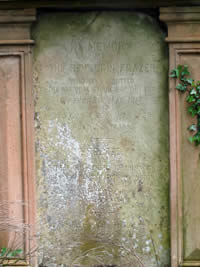 A very close friendship existed between Mr Frazer and Mr Boyd of Auchinleck. They read the same newspaper together. The boy who called at Cumnock manse two or three times a week in order to take it to Auchinleck, still lives, an old man with many reminiscences of church life in bygone days. In 1829 an epidemic of fever raged in Cumnock. Mr Frazer was seized by it, and after a short illness succumbed to it in the fourteenth year of his ministry. His last sermon was preached at Monkwearmouth, where his illness began to show itself. He was able, however, to return home. Mr Frazer was unmarried. The following inscription, taken from his tombstone in the old churchyard where he lies buried, will fitly close this sketch of his career. It has a special interest from the fact that he is the first minister of the parish, whose resting-place in God's acre is marked by a memorial stone. It was erected in 1874, and took the place of an older stone, which was removed in that year, in order to allow room for the twin monuments now standing side by side — the one marking the burial place of Mr Frazer, and the other that of Mr. Bannatyne, his successor.
A very close friendship existed between Mr Frazer and Mr Boyd of Auchinleck. They read the same newspaper together. The boy who called at Cumnock manse two or three times a week in order to take it to Auchinleck, still lives, an old man with many reminiscences of church life in bygone days. In 1829 an epidemic of fever raged in Cumnock. Mr Frazer was seized by it, and after a short illness succumbed to it in the fourteenth year of his ministry. His last sermon was preached at Monkwearmouth, where his illness began to show itself. He was able, however, to return home. Mr Frazer was unmarried. The following inscription, taken from his tombstone in the old churchyard where he lies buried, will fitly close this sketch of his career. It has a special interest from the fact that he is the first minister of the parish, whose resting-place in God's acre is marked by a memorial stone. It was erected in 1874, and took the place of an older stone, which was removed in that year, in order to allow room for the twin monuments now standing side by side — the one marking the burial place of Mr Frazer, and the other that of Mr. Bannatyne, his successor.
From headstone in Cumnock old cemetery
In memory of Rev John Frazer, who was admitted to the pastoral charge of this parish on the 13th May 1819 and died on the 20th November 1829. Erected by parishioners of Cumnock in token of respect for his worth as a man, and of gratitude for his labour as a minister. The righteous shall be had in everlasting remembrance.
1802-1874
 The Rev Ninian Bannatyne was born 27th October 1802 in Rothesay, Isle of Bute. Eldest son of Ninian Bannatyne, shipowner, Rothesay. His brother Archibald was also a Free Church minister in Bute, Oban and Ayr.
The Rev Ninian Bannatyne was born 27th October 1802 in Rothesay, Isle of Bute. Eldest son of Ninian Bannatyne, shipowner, Rothesay. His brother Archibald was also a Free Church minister in Bute, Oban and Ayr.
The Bannatynes are one of the very oldest Bute families – the Kames branch having possessed that estate from the 14th century. When King James the 4th, in 1506 conveyed the Crown Lands in Bute to the then Crown Tenants, no less than 12 of the 79 small estates into which Bute was divided were given to the Bannatyne’s, as they were then called. The branch of this ancient family, from which Ninian was descended, was the branch which received the Gift of the Lands of Lubas in 1506. These they retained until about 1738, when they fell into the hands of the Marquess of Bute’s ancestor, like most of the other small estates in Bute.
After serving for a time in a mercantile office in Greenock, Ninian was educated at the University of Glasgow, where he studied in Arts and Divinity and gained an MA in 1825.
Presented by John, Marquess of Bute on 10th February and ordained on 16th September 1830 in the Established Church he left in 1843 after the Disruption and joined the Free Church where he was minister from 1843-1874. He died unmarried on 20th February 1874.
From Warrick’s History of Old Cumnock
Many in Cumnock still remember Mr Bannatyne’s courtly appearance and kindly manner. Under a very quiet demeanour he possessed great strength of character, so that when the conflict with the State for the freedom of the Church culminated in the Disruption of 1843, Mr Bannatyne stood firm to the principles he avowed. At the call of conscience, he willingly resigned his position and emoluments as a minister of the Church established and endowed by law, in order to be minister of the Free Church of Scotland in Old Cumnock. Those who adhered to him learned all the more to admire him as a man, and to love him as a pastor.
The following extracts from the obituary notice, which appeared of him soon after his death in 1874, in the Free Church Record from the pen of his nephew, the Rev. Alexander M Bannatyne, describe the salient features of his devoted ministry : "His close attention to his pastoral charge threatened not long after his entrance on the ministry to send him to an early grave; but after a little relaxation and a visit to St. Kilda, his health was restored, and he was able till the end of his earthly career, to give unremitting attention to the service of the Chief Shepherd. During the Ten Years Conflict, at the Disruption itself and ever afterwards till his death, he unflinchingly testified to the Headship of Christ over the Church and his Headship over the nations. It is believed that he was the very first to make a public sacrifice for these principles; for in view of the coming Disruption, he resigned the office he held as chaplain to the late Marquis of Bute, the Lord High Commissioner to the General Assembly. There was almost apostolical fervour and freshness in his prayers, particularly at communion seasons and at the bedside of the sick and aged and dying. In the welfare of the young he took a deep and practical interest - an interest which was responded to by the respect entertained for him by the youngest. His preaching was clear, apt and unostentatiously earnest. His communion addresses were so full of an unction from the Holy One, that they can never be forgotten. All classes felt the influence of a modest and office-magnifying Christian life. Though possessed of an easy literary style, Mr Bannatyne never travelled far in the paths of literature. Two small publications only were prepared by him for the press. The one is the valuable description of the parish written in 1837 for the New Statistical Account of Scotland. The other is a sermon published in 1844, and entitled Election no Excuse for Man’s Sloth or Sin, but rather a Motive to Holiness."
From his headstone in Cumnock old cemetery:
 In memory of Rev Ninian Bannatyne, Parish Minister for 13 years and Free Church Minister for 30 years at Cumnock.
In memory of Rev Ninian Bannatyne, Parish Minister for 13 years and Free Church Minister for 30 years at Cumnock.
He was born at Rothesay 27th October 1802 early brought to Christ and ordained 16th September 1830. Testifying to Christ headship he came out at the disruption in 1843 and died 20th February 1874.
Erected by the congregation and a few other friends in recognition of his personal coolness, his pervading charity, his self sacrificing spirit, his Christian faithfulness, his sympathetic forbearance, his unassuming courage, his prayerful tenderness, his ministerial assiduity, and his large share of the meekness and tenderness of Christ.
He being dead yet speaketh.
1812-1875
Research with Kay McMeekin and Sandy Weaver
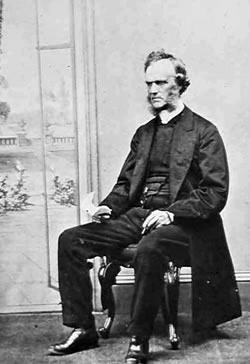 The Rev James Murray was the 5th minister to serve the congregation of the Established Church, situated in the Square, Cumnock. He served from 1843-1875.
The Rev James Murray was the 5th minister to serve the congregation of the Established Church, situated in the Square, Cumnock. He served from 1843-1875.
Kay McMeekin, a history group member, was researching genealogy material for our Cumnock Connections site when she discovered the Rev Murray’s extensive family tree by Sandy Weaver, his great great grandson. On the tree were several photos and documents including a photo of Isabella White the wife of the Rev James Murray. Kay approached him for permission to use this information on our website and Sandy went on to offer some more Murray material, including a short journal the Rev Murray had written during his time in Cumnock, which belongs to Sandy’s cousin in Nova Scotia, all of which we are publishing courtesy of Sandy. Meanwhile we have unearthed additional information surrounding the Rev Murray alongside a photo of James by John Ballantine the local Victorian photographer.
James Murray was born on 2nd January 1812 in Langcot Farm, Eddleston, Peeblesshire to John Murray and Jane Elliot. Educated at Eddleston school he went on to study at Edinburgh University and was licensed by the Presbytery of Peebles 26th July 1842 and acted as assistant at Roxburgh and Kirkconnel. Soon after the Disruption of 1843, he was appointed to Cumnock by the Marquis of Bute. It is interesting to note that he saw the demolition of the old Adam designed church which dated from 1754 and the building of the existing church which opened in November 1866.
James and his family stayed in the Glebe Manse at what was then called Broombrae, now Robertson Avenue. The Old Manse dates from 1750, with later additions, and is now a private home. The current building is on the site of the medieval manse and surrounding land is known as the Glebe, land owned by the Established church and would have been worked to provide a maintenance for the church and the minister.
James continued his ministry until his death in 1875, at the age of sixty-four. He died at Menton in Southern France, where he had gone for the sake of his health. Rev Murray was also a well regarded poet and writer. Murray published War in Prospect and War in Earnest (Edinburgh, 1855); Songs of the Covenant Times [anon.] (Edinburgh, 1861); The Prophets Mantle, being Scenes from the Life of Elisha, the son of Shaphat (Edinburgh, 1870). His younger brother Robert was Minister at the Martyrs Kirk, in New Cumnock from 1843-1894.
Obituary of the Late James Murray
A pronounced sensation was produced at Cumnock on Sunday afternoon, just as people were assembling for public worship, by the arrival of a telegram from Mentone, announcing that the highly respected parish minister, the Rev James Murray has expired there on the previous evening. Mr Murray was ordained as minister of the parish soon after the Disruption in 1843. His health began to fail in the early part of last Summer, and he was forced to seek for its restoration in the south of France. No permanent improvement, however took place, and he has died at the age of 59. Mr Murray was a native of Peebles. While at college in Edinburgh he indulged his poetic tastes by frequently contributing lyrical pieces to the literary journals. The Etteric Shepherd, it may be mentioned, had a high opinion of his talents as a poet. After his ordination he still wrote for the periodical press, particularly the McPhail’s Magazine. In 1861 he published “Song of the Covenant Times” which received the favourable notice of the press. In 1870 Messrs. Blackwood & Son, Edinburgh, brought out a work of his in prose, The Prophet Mantle; being scenes in the Life of Elisha. Through life he retained his passion for poetry and for the beauties of natural scenery, and to the last continued to devote a portion of his time to literature. Yet he never allowed this to interfere with his ministerial labours, for in the way of visiting his flock, and careful preparation for the pulpit, he was ever most assiduously attentive. No man was better informed than Mr Murray in the history of the Covenanting period of Scottish history. Of the martyr heroes of that time he had an enthusiastic admiration. Only in August last he delivered an eloquent address over the grave of Richard Cameron at Aird's Moss. Mr Murray leaves a widow and five children, the youngest being about ten years of age.
We provide some photographs of his family, headstone and the manse below.
A downloadable pdf of his Journal dated January 1846. Transcribed and produced by Kay McMeekin and Sandy Weaver is HERE
Original manuscript HERE
 1850-1934
1850-1934
Born 6th October 1850 in Kinnaird, Perthshire. Youngest son of Edmund Robertson, schoolmaster, Kinnaird and Elizabeth Sharpe. and brother of Edmund, Lord Lochee. Educated at Kinnaird Parish School and University of St Andrews. Licensed by Presbytery of St Andrews October 1874 and ordained 22nd July 1875 aged 25. John was married on 23rd April 1885 to Catherine Forbes they had 3 children, Edmund, Lillias and Robert.
John served the congregation for over 50 years and during that time he oversaw some important changes in his ministry. Students were engaged to act as missionaries in the town and miners’ rows and regular services were organised at Garallan and Skares where a new mission hall was built in 1911. A choir, Sunday school and Boy’s Brigade company were established and the interior of the church was refurbished with a new Church Hall being built in the Glebe at the bottom of Barrhill Road, thereby extending the range of activities to both congregation and the wider community.
At the beginning of the 20th Century there were 3 large Presbyterian congregations in Cumnock and John worked in partnership with the two other ministers, Alexander McDonald and John Warrick before his retirement in 1927 in the formation of the reunited Church of Scotland in 1929.
John died on 1 June 1934 aged 83 in Devon.
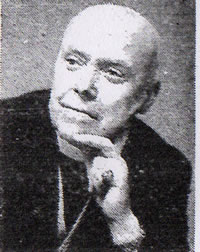 1902-1982
1902-1982
Born 30th November 1903 in Glasgow to John Douglas McClymont and Margaret Murray. John was educated at North Kelvinside Secondary School and University of Glasgow where he gained a Master of Arts in 1924 and a Bachelor of Divinity in 1927. He was licensed by Presbytery of Glasgow in April 1927 and was assistant at St Bernard’s, Glasgow, New Kilpatrick, and Glasgow Cathedral. He was ordained as assistant and successor to John Spence Robertson on 23rd November 1927. Contributor to Chambers Journal and other periodicals. He married Sibil Richmond in 1951 and had one daughter Isobel. His wife died in 1971 and he remarried in 1973 to his second wife Jean Collie.
John retired in the late 70s and died in 1982 aged 78.
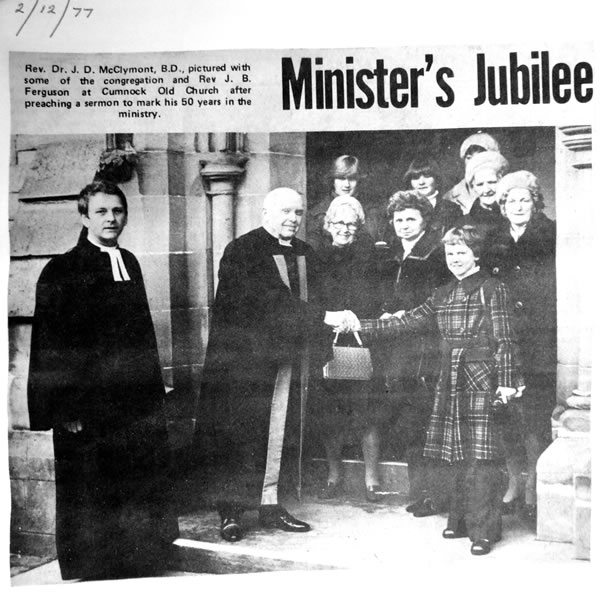
United Presbyterian (West United Free Church) - New Bridge Street
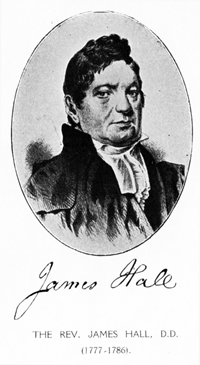 The church was erected in 1775. James came from Greyfriars in Glasgow, the church in which Rankin had at one time been a member. He afterwards became the first minister of Rose Street, and again the first minister of Broughton Place in Edinburgh, and received the degree of Doctor of Divinity from Queen’s College, New York in 1821. He was a man of culture and of fine literary taste. It is said that Burns consulted him as to the literary merit of some of his pieces. He was ordained in Cumnock on 16th April 1777, at the age of twenty-one. Hall's father was tenant of Cathcart Mill, near Glasgow. A younger brother, Robert, became minister of Kelso.
The church was erected in 1775. James came from Greyfriars in Glasgow, the church in which Rankin had at one time been a member. He afterwards became the first minister of Rose Street, and again the first minister of Broughton Place in Edinburgh, and received the degree of Doctor of Divinity from Queen’s College, New York in 1821. He was a man of culture and of fine literary taste. It is said that Burns consulted him as to the literary merit of some of his pieces. He was ordained in Cumnock on 16th April 1777, at the age of twenty-one. Hall's father was tenant of Cathcart Mill, near Glasgow. A younger brother, Robert, became minister of Kelso.
The stipend offered by the congregation to their pastor was not large. It was only £65 a year without a manse. Evidently this was all they could give, but they felt it was hardly enough. Whether it was with a view to increase Hall's income or not we are not told, but in 1781 the session "agreed that the parents pay 8d for the registration of each child in the session register, and also that their minister charge 2s. 6d for each marriage performed by him, not in his own house or in the church." Some of the other articles drawn up at the same time for the guidance and government of their people are interesting - "persons refusing to take office were to be fined 5s and be disqualified for holding any office in the congregation for two years. Anyone absenting himself without excuse should pay 6d for each time, and if continued would be required to pay such a fine as the managers thought fit to impose.”
In June 1786 he was called to preach in Edinburgh and this caused dissatisfaction across other congregations in Ayrshire, as well as in Cumnock, because the Synod sanctioned the move. Not only did Cumnock, but also the Kilmarnock, Tarbolton, and Fenwick congregations threaten to leave the denomination, because Hall was allowed to leave Cumnock. He served his congregation for nine years and they had grown in numbers. His eloquence attracted great audiences whenever he went and when we realise that his congregation was not drawn simply from Cumnock, but that Auchinleck, Ochiltree, New Cumnock, Muirkirk, Dalmellington, and Sorn, all sent their quota to his church at Cumnock. He died in Edinburgh on the 28th November 1826. The church was vacant for more than two years before the next minister was called.
Ordained on 30th October 1788 Wilson’s ministry extended over the long period of thirty-five years. He was a contrast in every way to his predecessor - a man of ability and strong character, and considered eccentric to a degree. He was eloquent in the pulpit, with a rough natural eloquence, which appealed strongly to the people. He was known as a vigorous evangelical preacher and he built up a flourishing congregation from all over Ayrshire. He was well known for visiting his more remote parishioners and one story states: - “On one occasion Wilson went to visit a shepherd on the hills, and as usual set out in the grey light of the summer morning. He met the shepherd himself but a few yards from his door. After making enquiry for all and sundry, the minister said that he would go to the house and see the guidwife. The shepherd was very anxious that the minister should not go, assuring him that "the house was fu' o' soor reek." "Na, na," said the minister; "I maun see the guidwife. I was never feart in a' my life for peat reek." He went forward to the door and opened it, when a blazing peat went flying past his reverend head. Luckily the guidwife missed her aim. She mistook Mr Wilson for her husband and the tender attention of the peat was meant for him. The minister had arrived in the middle of a matrimonial quarrel.”
A manse had been provided for him on the banks of the Lugar, the house, which seems to have cost only £70, was purchased by the people, each of the 800 members giving one shilling towards defraying the expense. Evidently the congregation had grown in a remarkable degree. The manse in now a private house situated on the right hand side of Auchinleck before you reach Broomfield Park.
David was born in the parish of Cambusnethan in 1754. His father, a cooper by trade, was beadle of the Secession Church at Davies Dykes, or Bonkle, as it is now called. David Wilson died in December 1822, at the age of sixty-nine. Two memoirs of him were published, one, a small pamphlet published in 1825 by a Re. Walker of Mauchline, gives an outline of his life. The Rev. Peter Mearns, of Coldstream, wrote the other, entitled The Devoted Minister, in 1858.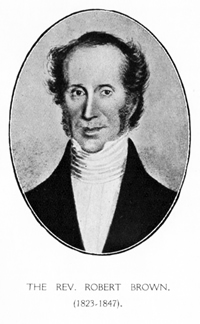 Born at Whinpark, near Kilmarnock in 1795, Robert had studied at Selkirk Hall and at Glasgow University. In 1822 he was licensed by the Presbytery of Glasgow, and on 18th November in the following year, ordained to the pastorate of Cumnock.
Born at Whinpark, near Kilmarnock in 1795, Robert had studied at Selkirk Hall and at Glasgow University. In 1822 he was licensed by the Presbytery of Glasgow, and on 18th November in the following year, ordained to the pastorate of Cumnock.
Brown never enjoyed robust health, yet he was able during a period of twenty-three years, to prosecute faithfully the work of the ministry. His appearance and character have been briefly sketched by his grandson:- “Those who remember him, and who were children when he died, picture him as a tall, dignified, kindly man, who rode on a black pony, and who never passed them without a genial smile or kindly word.” He took a prominent part in doctrinal controversies, but he seems to have adhered pretty strictly to the rigid Calvinism, which characterized the Scottish theology of his time.
About six months before his death, Mr Brown found work difficult and in February 1847, he preached what proved to be his last sermon. We are told, "He went to church and engaged in praise and prayer. He also attempted to read a portion of the bible, but he became faint and had to rest. This was his last appearance at his church.” – U P Magazine, 1847. After lingering for five months, he died in July 1847 at the age of 53. His wife, Margaret Anderson, and several children survived him.
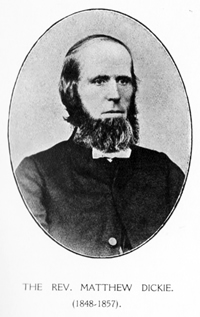 Born at the farmhouse of Raws, Kilmarnock in 1815. He was ordained in Cumnock in July 1848. Mr Dickie believed in the power of the pulpit. Accordingly he prepared thoroughly for the Sunday services. Nothing was allowed to interfere with his studies. He regarded the pulpit as the minister's throne and was a supporter of the Covenanters. Pastoral duty was also carefully attended to. He gave his aid freely to the cause of temperance, and was president of the local Temperance Society, which flourished under his guidance. His first attempts at authorship were in connection with the Scottish Temperance League, for which he wrote five small tracts. He likewise supplied the Scottish Review of October 1856, with an article on the legal aspects of the temperance question.
Born at the farmhouse of Raws, Kilmarnock in 1815. He was ordained in Cumnock in July 1848. Mr Dickie believed in the power of the pulpit. Accordingly he prepared thoroughly for the Sunday services. Nothing was allowed to interfere with his studies. He regarded the pulpit as the minister's throne and was a supporter of the Covenanters. Pastoral duty was also carefully attended to. He gave his aid freely to the cause of temperance, and was president of the local Temperance Society, which flourished under his guidance. His first attempts at authorship were in connection with the Scottish Temperance League, for which he wrote five small tracts. He likewise supplied the Scottish Review of October 1856, with an article on the legal aspects of the temperance question.
In April 1857, he accepted an invitation to St. James in Bristol, and left Cumnock after a ministry of nine years. In Bristol he quickly made a name for himself as a preacher and pastor. Ill health, however, began to affect him and in 1869 he retired from active work. He died in May 1871 at the age of 56.
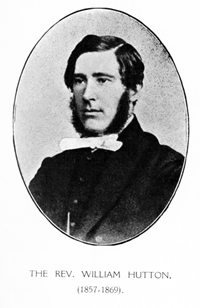 William Hutton was born in Glasgow in August 1835. Having completed his studies at the University of Glasgow. He was called to Cumnock in November 1857 at the age of twenty-two. After a ministry of twelve years he moved to Moffat. It was during his ministryin the year 1868 that the present manse was built at a cost of £930 of which £200 came from the Manse Board.
William Hutton was born in Glasgow in August 1835. Having completed his studies at the University of Glasgow. He was called to Cumnock in November 1857 at the age of twenty-two. After a ministry of twelve years he moved to Moffat. It was during his ministryin the year 1868 that the present manse was built at a cost of £930 of which £200 came from the Manse Board.
 Alexander McDonald was ordained in January 1871. He has had a very successful ministry, and the church flourished. One encouraging feature of the church-life during his time has been the number of young men who have gone forward to take up studies for the ministry, and lo take their places in the United Presbyterian Church. His ministry in Cumnock lasted for 42 years. He died on 8th June 1913.
Alexander McDonald was ordained in January 1871. He has had a very successful ministry, and the church flourished. One encouraging feature of the church-life during his time has been the number of young men who have gone forward to take up studies for the ministry, and lo take their places in the United Presbyterian Church. His ministry in Cumnock lasted for 42 years. He died on 8th June 1913.
 Scott was ordained in 1913 and served through the years of the Great War. During his ministry in Cumnock he launched the Literary Guild, the first of its kind in the Church. In 1922 he was called to East Bank Church in Hawick.
Scott was ordained in 1913 and served through the years of the Great War. During his ministry in Cumnock he launched the Literary Guild, the first of its kind in the Church. In 1922 he was called to East Bank Church in Hawick.
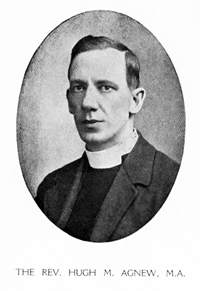 Hugh Agnew was ordained in 1922 and wrote the United Free Church West, Cumnock. Its History 1773-1923. Published in 1923 by the Cumnock Chronicle Press, the history is comprehensive in it's scope with some illustrations.
Hugh Agnew was ordained in 1922 and wrote the United Free Church West, Cumnock. Its History 1773-1923. Published in 1923 by the Cumnock Chronicle Press, the history is comprehensive in it's scope with some illustrations.
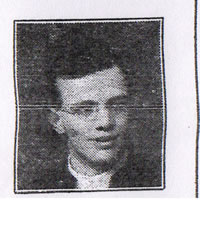

St John the Evangelist - Glaisnock Street - work ongoing

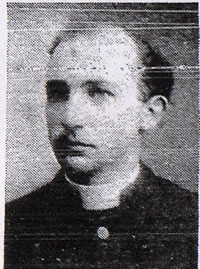
Martin was a quiet, dignified man, well thought of by Catholics and non-Catholics alike. He served as priest firstly on foot, then by horse and trap and latterly by car – from 1906 to 1936. He served on the School Board from 1911 till 1919. During his service a new catholic school opened in 1907 and a new presbytery built in 1914. He became a Canon, but declining health saw him transferred to a less demanding charge in Irvine. He died two years later in 1938.
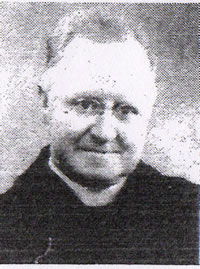
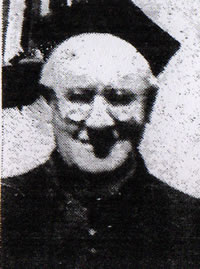
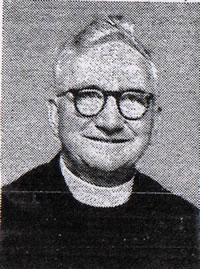
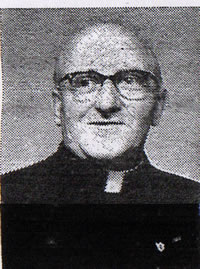
Cumnock Free Church (Demolished) -Ayr Road
 Presented by John, Marquess of Bute on 10th February and ordained on 16th September 1830 in the Established Church he left in 1843 after the Disruption and joined the Free Church where he was minister from 1843-1874. He died unmarried on 20th February 1874.
Presented by John, Marquess of Bute on 10th February and ordained on 16th September 1830 in the Established Church he left in 1843 after the Disruption and joined the Free Church where he was minister from 1843-1874. He died unmarried on 20th February 1874.
John Warrick was born in Leith on 27th October 1855 to William Warrick and Elizabeth Muirhead. He was the fourth son of eight children and his father was a successful Edinburgh Wine Merchant. He was educated at Edinburgh University and the New College, graduating as Master of Arts. He served the church at Forres in Morayshire, and in Edinburgh, before being ordained at Cumnock Free Church on 22nd February 1883. When the Free Church and the Church of Scotland reunited in 1929, Warrick was chosen by Ayr Presbytery to be its first moderator. He was an authority on church law, especially that of the Free Church, and was often asked for advice on ecclesiastical procedure.
Crichton West Church now Trinity Church - Ayr Road - work ongoing
1855-1931
John Warrick was born in Leith on 27th October 1855 to William Warrick and Elizabeth Muirhead. He was the fourth son of eight children and his father was a successful Edinburgh Wine Merchant. He was educated at Edinburgh University and the New College, graduating as Master of Arts. He served the church at Forres in Morayshire, and in Edinburgh, before being ordained at Cumnock Free Church on 22nd February 1883. When the Free Church and the Church of Scotland reunited in 1929, Warrick was chosen by Ayr Presbytery to be its first moderator. He was an authority on church law, especially that of the Free Church, and was often asked for advice on ecclesiastical procedure.
He was Free Church minister of the Crichton Church, Ayr Road, Cumnock just as the old Free Church was being demolished and the existing church was being built. He delivered a service when the foundation stone was laid on 27th July 1897. From that time until 1899 he spent time researching The History of Old Cumnock - his main claim to fame.
Although he did not serve on any local committees or organisations, he did tireless work for local causes. He promoted the work of the Nursing Association and helped to raise funds for the Bute Hospital. He was a keen walker and gardener. He had a deep interest in the local Covenanting martyrs - visiting many of their graves. He helped to acquire the Ochiltree Covenanters Banner and presented it to the National Museum of Antiquities in Edinburgh.
He also helped to preserve Cumnock’s Mercat Cross. By the 20th century the cross was over 400 years old and was in a poor condition. A suggestion was made to break it up but Warrick and other parties organised fellow Cumnockians to its defence. This culminated in a packed public meeting in the Town Hall and the Cross’s protection as a scheduled Ancient Monument.
In 1891 John married Ina Alice Philip but she died in childbirth in 1898 aged only 36. He subsequently married Elizabeth Johnstone in 1903. In 1908, John celebrated his silver jubilee as a minister in Cumnock with a special church service at which he was presented with a pulpit gown and cassock, a Psalm book and a purse of sovereigns. His wife Elizabeth and baby daughter Edith were also presented with a number of gifts.
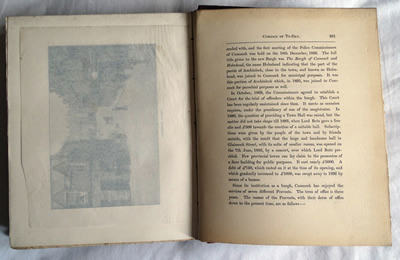 John Warrick was a literary man. As well as writing the History of Old Cumnock, he also wrote The Moderators of the Church of Scotland from 1690 to 1740, published in 1913 and some of his sermons were also published in pamphlet format.
John Warrick was a literary man. As well as writing the History of Old Cumnock, he also wrote The Moderators of the Church of Scotland from 1690 to 1740, published in 1913 and some of his sermons were also published in pamphlet format.
It is interesting to note that John and his wife Ina looked after his older brother William up until his death in 1887 and both his parents prior to their deaths in 1888 and 1889 respectfully, in the Manse, Ayr Road.
In his old age John continued to serve the church and parish to the best of his ability, even though he was often ill. He was desperate to serve until his Golden Jubilee in 1933, but suffered strokes in June 1931 and died early in the morning of 24th June 1931. A special memorial service was held in the Crichton Church, followed by a burial service at Cumnock’s new Cemetery. In his will he left an estate of over £20,000.
Obituary from the Cumnock Chronicle of 26th June 1931
Passing of the Rev John Warrick M. A.
Forty-eight years ministry in Cumnock
Early on Wednesday morning the soul of John Warrick, Master of Arts, and for forty-eight years minister of what is now known as the Crichton Memorial Church, was gathered in great peace to his Heavenly Father. Several weeks earlier he had been laid aside by sudden stroke, and on Monday, after fair recovery, he experienced a serious relapse which culminated in his death as stated. After a brief period of assistantship at Forres and Edinburgh, Mr Warrick was ordained in the Free Church here in March 1883, in succession to the Rev. Mr Adamson. Of the members of that churches eldership who welcomed him to Cumnock, ex-Provost Hunter, J.P. has been the sole survivor during the past twenty-three years. In 1899 the stately edifice over which Mr Warrick presided was erected by Miss Crichton in memory of her father.
In his long ministry Mr Warrick has cheered and helped many in the time of their sorrow and sadness by kind words of sympathy and encouragement. As an honoured instrument in God’s hands he turned many a soul from darkness to the light of Heavenly truth, and those who knew him best speak lovingly of his consideration for the poor, his sympathy for the bereaved, and his anxiety for the spiritual welfare and highest good of his people.
It is well known that Mr Warrick cherished the hope that he would be spared to celebrate the jubilee of his Cumnock ministry. That desire kept him busy in the affairs of his church and the duties of his ministry, when greater thought for his personal welfare might have urged him to well-earned retirement. For several years he laboured under the serious handicap of bodily ailment, which would have made many a less determined man retire from the arduous claims of his calling. He had strong views on the question of life-long pastorates, and often referred to the historical fact that during the last 225 years only two of his predecessors in office had accepted calls to other parts of the country.
Mr Warrick always adhered to the belief that the pulpit was the minister’s watchtower, and his place of greatest power. Consequently, his advice to young ministers, who have come into our midst, has always been that they should be much in their study preparing for the sermons of the house of God. In his preaching Mr Warrick’s ideal was ever that of being strictly biblical. He adhered to the letter of his ordination to preach the gospel; and to the gospel of the grace of God, it may be truthfully said, he strictly confined himself. No literary, political or semi-religious subject, he contended, fell within the preacher’s commission to be dealt with on the day or worship. His attitude always was that a layman, interested in the study of the book of God and seeking to gain help in the sanctuary to bear the burdens of life, should resent the offer of such un-nutritious fare, irrespective of its great general interest. Perhaps the duty which Mr Warrick allowed most often to break in upon his preparation for the pulpit was that of his visitation of the sick or the lonely. In that sphere of his congregational activity he was indefatigable, and they are a great majority who will remember him best for that especial diligence.
He had fixed ideas of the powers and functions of every church organisation, and few could equal him in his knowledge of church law or ecclesiastical procedure. A man of amazing erudition in these spheres of learning, he was recognised by brother ministers and officers of the church as an authority whose considered opinion could be relied upon. A man of strongly developed literary taste, it was not to be wondered at that he should devote himself to the meticulous compilation of facts pertaining to the town and parish in which he laboured. Every conceivable source of information was searched, and every authority consulted and verified over a period of years; and then, in 1899, there appeared from the Press of Alexander Gardner, the volume treasured by all true sons of our town, “The History of Old Cumnock”. For all time that work will remain the standard of authentic information, historic and antiquarian, relative to our burgh and parish. Mr Warrick penned other works, most important perhaps being his “Biographies of the Moderators of the Church of Scotland, from 1690 to 1740”.
On the consumation of the Re-union of the Church of Scotland, two years ago, he was honoured by being elected the first Moderator of the United Presbyteries. In public life Mr Warrick took no great active part, although he always evinced real interest in the welfare of such beneficent institutions as the Nursing Association and the Bute Hospital. A keen amateur gardener, he spent a good deal of time in the manse grounds tending the flowers and lawns. He was well versed in botany and knew every wayside flower. He was never a member of any of our public boards or committees, though he took more than a passing interest in their affairs. He travelled a good deal.
Eight years ago Mrs Warrick predeceased her husband, and to Miss Warrick now is extended the sympathy and condolence of the entire community. As an act of respectful mourning the church choir and Sabbath School have abandoned their summer outings, arranged to take place this week. A memorial service will be held in the church this afternoon at two o’clock.
{Note – the Chronicle of the following week gives a report of the memorial service and other pulpit references}
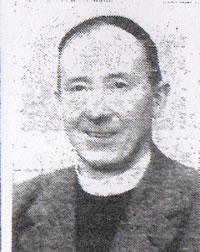
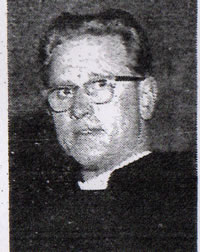

Congregational - Auchinleck Road
Sime’s ministry was short. After remaining for two years Mr Sime resigned.
Ordained in 1844 P W Grant continued to act as minister for nine years. The memory of his high character and faithful work lingers till the present day. Hitherto the congregation had met in a hall belonging to the Black Bull Hotel, but during Mr Grant's incumbency a great step was taken in the purchase, for £700, of a building on the north side of the Square as a place of worship.
Owing to a change in his views on Infant Baptism, Mr Grant at length found it necessary to resign his pastorate, and to attach himself to the Baptist denomination. In this connection he acted first as minister of the Baptist Church in Cupar, and then for fourteen years in Darlington. Thereafter he retired from active service, and took up his residence in Perth, where he still lives. Mr Grant has devoted his leisure time largely to study, and has issued through the press several volumes of theology.
John became pastor In 1853, and remained for eleven years, when he accepted a call to Stratford. Mr McAuslane published a small pamphlet entitled The Young Student. At the time of his death he was minister of the church at Garliestown.
Formerly minister of Duncanstone, was settled in 1866, and after a pastorate of six years removed to Cambuslang.
Resigned in 1876 on account of his adoption of Baptist views.
Inducted in 1877, but left after a ministry of four years for America.
Ordained in 1882, and resigned in 1884. After being engaged in work at Sullom, in the Shetland Isles for some years, he accepted a call to Rutherglen, in February 1899.
Born Glasgow 1st November 1849. Church Member at Albion Street Congregational Church Aberdeen. University Aberdeen and Edinburgh. Trained at Theological Hall of Congregational Churches in Scotland 1873-1876. Ordained in 1878. Parishes Served; Supply - Hawick Congregational Church c1877; Stuartfield Congregational Church 13th March 1878-1884. Ordained in Cumnock on the 5th October 1884. Died 14th March 1913 and buried in Cumnock new cemetery at Glaisnock Road,.
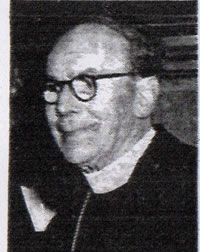
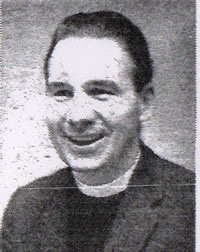
Baptist Church - Barrhill Road - work ongoing
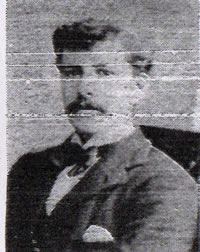
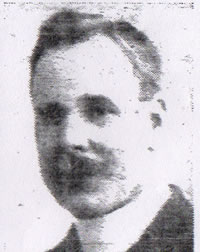
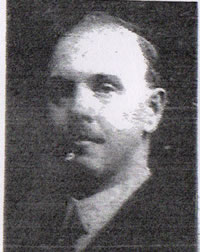
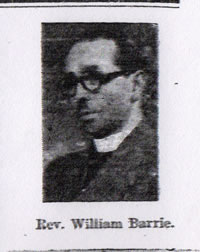

St Andrew's United Free - Glaisnock Street
St Ninians - Craigens Road
Lugar Church - Craigston Square, Lugar - work ongoing
 Transferred from Swallow Street Church, London in 1867 and then transferred to St Matthew's, Montreal in 1875.
Transferred from Swallow Street Church, London in 1867 and then transferred to St Matthew's, Montreal in 1875.
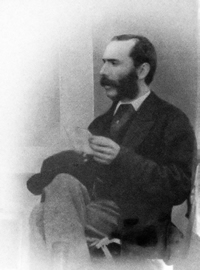 Probably the son of James Clelland, Church of Scotland minister from Corsehill Mill in Ayrshire. John was ordained to Cobden Street Chapel, Townhead, Glasgow in 1873 and admitted to Lugar in 1876.
Probably the son of James Clelland, Church of Scotland minister from Corsehill Mill in Ayrshire. John was ordained to Cobden Street Chapel, Townhead, Glasgow in 1873 and admitted to Lugar in 1876.
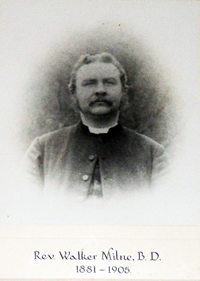 Born in Dundee in 1853 and educated at University of St Andrews, MA 1874, BD 1877. Licensed by Presbytery of Dundee 3rd Oct. 1877. Ordained 30th June 1881. Resigned 7th March 1905 and died unmarried 11th March 1916.
Born in Dundee in 1853 and educated at University of St Andrews, MA 1874, BD 1877. Licensed by Presbytery of Dundee 3rd Oct. 1877. Ordained 30th June 1881. Resigned 7th March 1905 and died unmarried 11th March 1916.
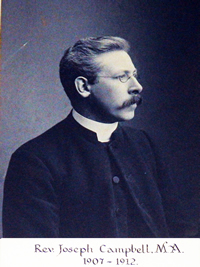 Born Glasgow 2nd May 1867, son of Joseph Campbell and Margaret Crockett. Educated at Glasgow Highland Society's School, University of Glasgow, and Central University of Indiana USA. MA August 1915. Licensed by Presbytery of Glasgow November 1899 then assistant at Brucefield, Larbert and Dunipace. He was ordained 7th January 1907. First minister of the parish 8th March 1907 and resigned July 1912 and went to America then returned to Scotland, and became assistant at Riccarton. Married 11th April 1907 to Marion McKinlay Park, daughter of George Park MD, Kilsyth. Died 28th September 1944.
Born Glasgow 2nd May 1867, son of Joseph Campbell and Margaret Crockett. Educated at Glasgow Highland Society's School, University of Glasgow, and Central University of Indiana USA. MA August 1915. Licensed by Presbytery of Glasgow November 1899 then assistant at Brucefield, Larbert and Dunipace. He was ordained 7th January 1907. First minister of the parish 8th March 1907 and resigned July 1912 and went to America then returned to Scotland, and became assistant at Riccarton. Married 11th April 1907 to Marion McKinlay Park, daughter of George Park MD, Kilsyth. Died 28th September 1944.
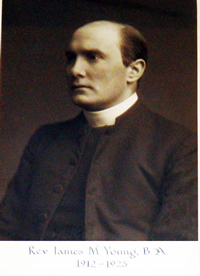 Born in Dublin 6th November 1880, son of James Bristow and Matilda Russell. He was educated at St Andrew's School, Dublin, University of Dublin and Glasgow; BA Dublin 1902. Licensed by Presbytery of Linlithgow May 1905 then assistant at East Church, Stirling, and Hillhead, Glasgow. Ordained 19th December 1912. Married 14th July 1915 to Jane, daughter of John Blackburn Hislop, FRCSE. Killed on railway near Grantown 23rd July 1925.
Born in Dublin 6th November 1880, son of James Bristow and Matilda Russell. He was educated at St Andrew's School, Dublin, University of Dublin and Glasgow; BA Dublin 1902. Licensed by Presbytery of Linlithgow May 1905 then assistant at East Church, Stirling, and Hillhead, Glasgow. Ordained 19th December 1912. Married 14th July 1915 to Jane, daughter of John Blackburn Hislop, FRCSE. Killed on railway near Grantown 23rd July 1925.
 Born Edinburgh 2nd January 1891 and son of Alexander Wallace and Helen Maxwell. Educated Foss way Public School and Dollar Academy, Manitoba University and Glasgow University. He served in the Canadian 11 Field Ambulance 1916-18 and was a student missionary in Canada 1919-23. Licensed by Presbytery of Dumbarton May 1925 then assistant at Dumbarton August 1924.He was ordained 17th December 1925 then transferred to Thornton 24th October 1929. Married 3rd Feb. 1926 to Ann McKendrick, daughter of George McKendrick King and Jessie Manson Russell, and had had 2 children, Eileen Margaret, born 19th October 1927 and James Victor Bryden, born 19th December 1929.
Born Edinburgh 2nd January 1891 and son of Alexander Wallace and Helen Maxwell. Educated Foss way Public School and Dollar Academy, Manitoba University and Glasgow University. He served in the Canadian 11 Field Ambulance 1916-18 and was a student missionary in Canada 1919-23. Licensed by Presbytery of Dumbarton May 1925 then assistant at Dumbarton August 1924.He was ordained 17th December 1925 then transferred to Thornton 24th October 1929. Married 3rd Feb. 1926 to Ann McKendrick, daughter of George McKendrick King and Jessie Manson Russell, and had had 2 children, Eileen Margaret, born 19th October 1927 and James Victor Bryden, born 19th December 1929.
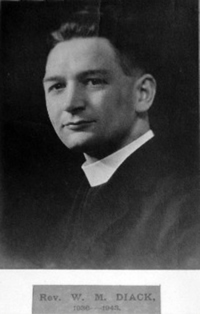

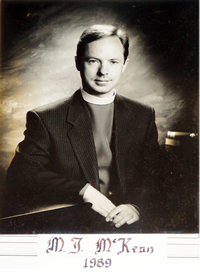
Sacred Heart Convent & Bute Hospital (Demolished) - Barrhill Road - work ongoing
Sources:
Warrick. J, The History of Old Cumnock, Alexander Gardner, London, 1899.
Steven. H J, The Cumnocks, Old and New, Dunlop and Drennan, Kilmarnock, 1899.
Scott. H, Fasti Ecclesiae Scoticanae, Vol III, Oliver and Boyd, Edinburgh, 1920.
Scott. H, Fasti Ecclesiae Scoticanae, Vol VIII, Oliver and Boyd, Edinburgh, 1950.
‘The Cumnock Chronicle’ December 1966.
R Guthrie, ‘New Cumnock. History of the Parish of New Cumnock’, 2015, http://members.tripod.com/bob_newcumnock/cov_crawford/cumnock_ministers.html
